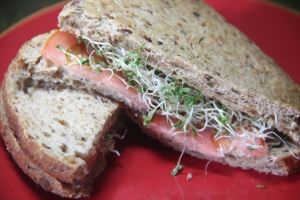Menopause is a natural biological process and in brief terms it is the time when a woman stops menstruating. The hormones estrogens and progesterone production will be low and the ovaries no longer produces eggs. In women estrogen is mainly produced in the ovaries. It is also produced in fat cells and adrenal glands.
Most women approaching menopause will have hot flashes, a feeling of warmth spreading over the entire body resulting in profuse sweating. The hot flashes varies from mild to severe, among women. Mood swing, irritability, insomnia, headache are also common symptoms during this period. No worries! Regular aerobic activities will help control all these symptoms.

Post-Menopause is tied to long-term health problems if healthy food intake and regular physical activity is not practiced. The loss of estrogens along with unhealthy food habits and sedentary lifestyle might lead to the following complications:
Drop in estrogen levels has been associated with an increased risk of cardiovascular disease.
The hormone estrogen help protect the inner layer of the artery wall, thereby keeping the blood vessel flexible. Which means they can relax and expand to accommodate blood flow. So, Menopause does not cause the heart disease. It is the decline in the hormone estrogen that is considered one among the causes of heart diseases. As per American heart association, women should do 150 mins of physical activity each week to prevent the heart diseases. Walking, dancing, cycling and swimming are good aerobic activities women can enjoy to keep themselves fit. Regular consumption of omega rich fish like-salmon, tuna, mackerel, nuts like almonds and walnuts are considered good for heart health along with whole grains, lean protein meats, fruits and vegetables.

The influence of estrogen on osteoporosis
In women bones are protected by the hormone estrogen. During post–menopause there is no production of estrogen through ovaries and the body depends only on fat cells as a source of this bone protecting hormone. During the first half of the life, there is a balance between the bone formation and the bone loss. But in the first few years after menopause, a woman may lose bone density rapidly. That is, more bone being broken down than formed. The lower a person’s bone density, the higher the risk of developing osteoporosis, a progressive disease that makes the bones get weaker and increases the risk of sudden and unexpected fractures
Weight – bearing exercises, 3-4 times a week will help prevent osteoporosis. Walking, jogging, playing tennis, climbing stairs, dancing are all good weight-bearing exercises. Women should consume foods rich in calcium & vitamin D. Along with regular weight-bearing activities, foods like, milk and dairy products (low-fat), seafood like salmon, sardines, egg, dry beans, vitamin C rich fruits and green leafy vegetables will help build bones throughout your life.



During the menopausal transition, women are more prone to overweight / obesity.
When women go through menopause, their metabolism declines. If the diet and the daily calorie requirement is not controlled, the excess amount of calories consumed will be stored as fat.
Consuming a balanced meals that includes plenty of vegetables, fruits, whole grains, unsaturated fats, fibre and complex carbohydrates along with regular moderate activities 30 mins every day, will help maintain the weight.

After menopause, obese women are at higher risk of breast cancer.
Estrogens created by fat cells have been linked to breast cancer formation in obese women. Estrogens are essential for women, but higher the estrogens, the greater the driving force behind breast cancer. Fat cells are very active cells that creates estrogen. Excess amount of body fat cells will produce more estrogen which in turn increases the insulin production. Insulin, a hormone, delivers glucose into the cells where it will be stored as fat. Excess the fat you have, higher the levels of estrogen and eventually higher the insulin production. The more the insulin in the blood, higher the storage of glucose to fat. And the cycle goes on and on.
“Excess” fat: the main culprit.
Regular exercise will help reduce the body fat which eventually decreases the risk of developing breast cancer with no side effects. Cruciferous vegetables like broccoli, cabbage, cauliflower, radishes, watercress, and mustard greens will in addition help protect the cells against cancer.


Regular exercise and food rich in wholegrains, fruits & green leafy vegetables, low-fat dairy products, nuts, fish, lean meat, dry beans will help you stay healthy after menopause.








































